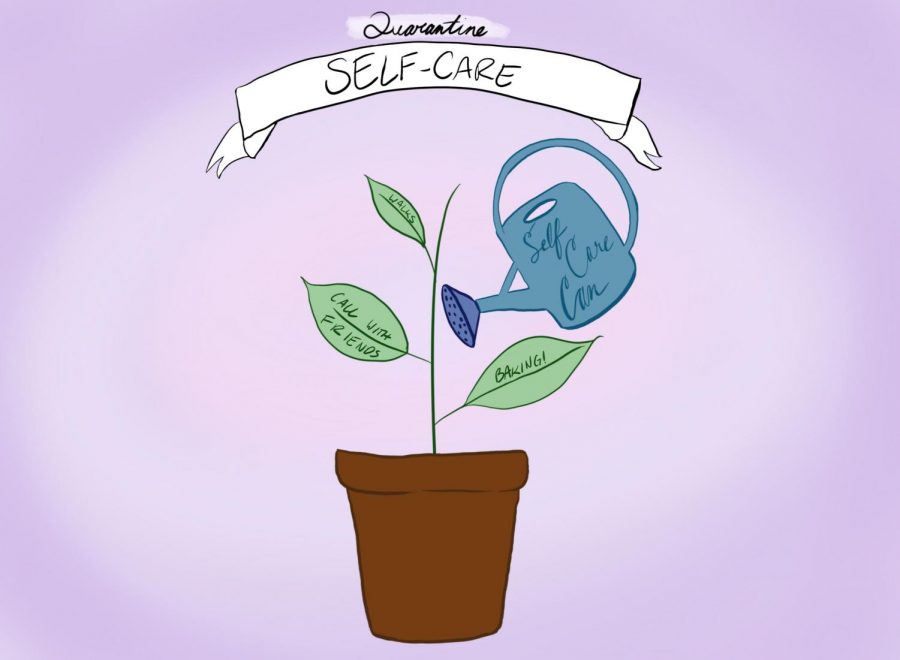Self care methods at SCHS have changed since the shelter-in-place order
Students have developed new methods to take care of themselves.
After logging off of her last class of the day, sophomore Sarah Olson heads outside to lay in the grass and soak up the sun. She puts in her earbuds and begins blasting music to drown out the outside world.
For some students, shelter-in-place has allowed them to dive deeper into taking care of themselves. For Olson, self-care is about making time to do what she loves.
“One of my favorite things to do is go outside and lay in the sun and listen to music. I can do that for hours on end,” Olson said. “It’s something that I find calming and relaxing. It’s a time where I can be alone with my thoughts and I can suntan as well.”
According to Olson, one of the hardest parts about shelter-in-place is not being able to do activities with her friends. She said that self-care now is more about doing activities that would mimic her busy life before the pandemic.
“Usually self-care is about putting yourself first, but now I have so much time to be alone with myself, it’s a little concerning to the point where I need to take that time to concentrate on things outside of my head just to keep myself sane,” Olson said.
Olson and her friends started a book club to address this problem.
“It’s a great way to talk about something normal because we all read books regularly anyway and it’s a good use of my time,” Olson said. “Not only is it fun, it brightens my mood to see my friends faces on the screen (and) talk about something we really enjoy.”
Like Olson, sophomore Carsten Etling also sees doing activities that remind him of life before shelter-in-place as a way to take care of his mental health. Etling has been scheduling video calls with his friends to stay in touch.
“Some days I’m lonely or stressed, but then the call I have scheduled with my friends happens and it completely changes my mood,” Etling said.
Freshman Kavi Rajesh and her family also find ways to distract themselves from the unfamiliar lifestyle of staying inside.
“I usually go on long drives to random places with my family. We turn on the radio and we listen to music together and put the windows down,” Rajesh said. “We do it to simulate going out in real life, even if we don’t get out of the car, because it just makes us feel better and more sane.”
Rajesh thinks that the stay-at-home order can have a negative impact on people’s mental state because they are unable to interact with those they used to see on a regular basis.
“Before quarantine, life was pretty simple, and now life isn’t,” Rajesh said. “So people evolved and are finding ways to cope with life now in efforts to make it as ‘normal’ as it can be.”


